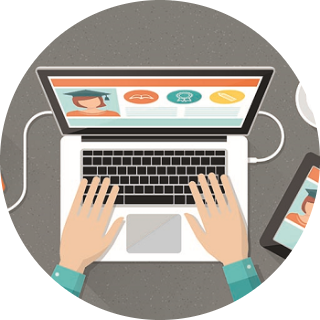When it comes to building a website, one of the most important decisions you’ll make is choosing the right freelance website designer. A well-designed website can enhance your brand, improve user experience, and ultimately drive more sales or conversions. But with so many freelance designers available, how do you find the best one for your project?
Here’s a step-by-step guide on how to find the perfect freelance website designer for your needs.
1. Understand Your Needs and Budget
Before you even start searching for a designer, it’s crucial to know exactly what you need. Are you building a simple blog, a business website, an e-commerce store, or a more complex web application? Each of these projects requires different skill sets, so understanding your project scope is the first step.
Additionally, set a clear budget for your project. Freelance website designers charge varying rates depending on their experience, skill level, and the complexity of the project. Having a budget in mind will help you narrow down your options and ensure you’re not overwhelmed by options that exceed your price range.
2. Look for Experience and Specialization
When hiring a freelance website designer, experience matters. A designer with a proven track record is more likely to deliver a polished, functional website that meets your needs. Look for someone with experience designing websites for businesses in your industry or projects similar to yours.
Some designers specialize in specific types of websites—such as e-commerce sites, portfolios, or corporate websites—while others are more general. It’s a good idea to find a designer who specializes in the type of website you want to build. You’ll be more confident that they know the unique challenges and design strategies required for your project.
3. Review Their Portfolio
A portfolio is a designer’s most important tool for showcasing their skills and style. Review their portfolio to get a sense of their design aesthetic, creativity, and technical ability. You should be able to find a variety of projects, from simple websites to more complex ones.
Pay attention to the details in their designs. Are they visually appealing and easy to navigate? Do they incorporate modern design trends and responsive layouts? A good website designer should create websites that not only look great but also offer seamless user experiences across devices.
4. Check Client Testimonials and Reviews
Client testimonials and reviews provide insight into the designer’s reliability, communication skills, and ability to meet deadlines. Look for feedback from previous clients on platforms like Google, LinkedIn, or design-specific websites like Behance or Dribbble. Positive reviews and satisfied clients are a good sign that the designer is trustworthy and capable.
If possible, reach out to past clients for more in-depth feedback. This will give you a better understanding of what it’s like to work with the designer, how they handle challenges, and whether they’re easy to communicate with.
5. Evaluate Communication Skills
Good communication is essential when working with a freelance website designer. You need someone who can understand your vision and translate it into a functional website. Pay attention to how quickly and clearly the designer responds to your initial inquiries. A designer who is prompt and transparent about their process and pricing is more likely to be professional throughout the project.
Ask about their preferred communication methods and make sure it aligns with your needs. Whether it’s through email, phone calls, or video conferences, effective communication is key to keeping the project on track.
6. Discuss Timelines and Deadlines
Freelance designers often work on multiple projects at once, so it’s important to discuss timelines upfront. Make sure the designer can commit to your project’s schedule and deliver on time. A professional designer will provide a realistic timeline based on their workload and the complexity of your website.
Be clear about your deadlines and make sure you have agreed upon milestones throughout the project. This will help you stay on track and avoid any last-minute delays.
7. Consider the Designer’s Technical Skills
A great design is only part of the equation. Your website will also need to function properly across all devices and browsers. A skilled freelance website designer should be proficient in coding languages like HTML, CSS, and JavaScript, and be familiar with CMS platforms such as WordPress, Shopify, or Squarespace.
If your website requires specific functionality, such as e-commerce features, custom plugins, or third-party integrations, ensure that the designer has the necessary technical expertise to bring your vision to life.
8. Establish a Clear Contract
Once you’ve selected a designer, make sure you have a formal contract in place that outlines the project scope, deadlines, payment terms, and any other important details. A well-written contract will protect both parties and ensure that expectations are clear.
The contract should also address ownership of the website upon completion, ensuring you have full rights to the design and code.
Conclusion
Finding the best freelance website designer for your project involves research, patience, and clear communication. By understanding your needs, reviewing portfolios, checking testimonials, and discussing key project details, you can hire a designer who will create a website that meets your goals. With the right designer on your team, your website can become a powerful asset for your business or personal brand.

